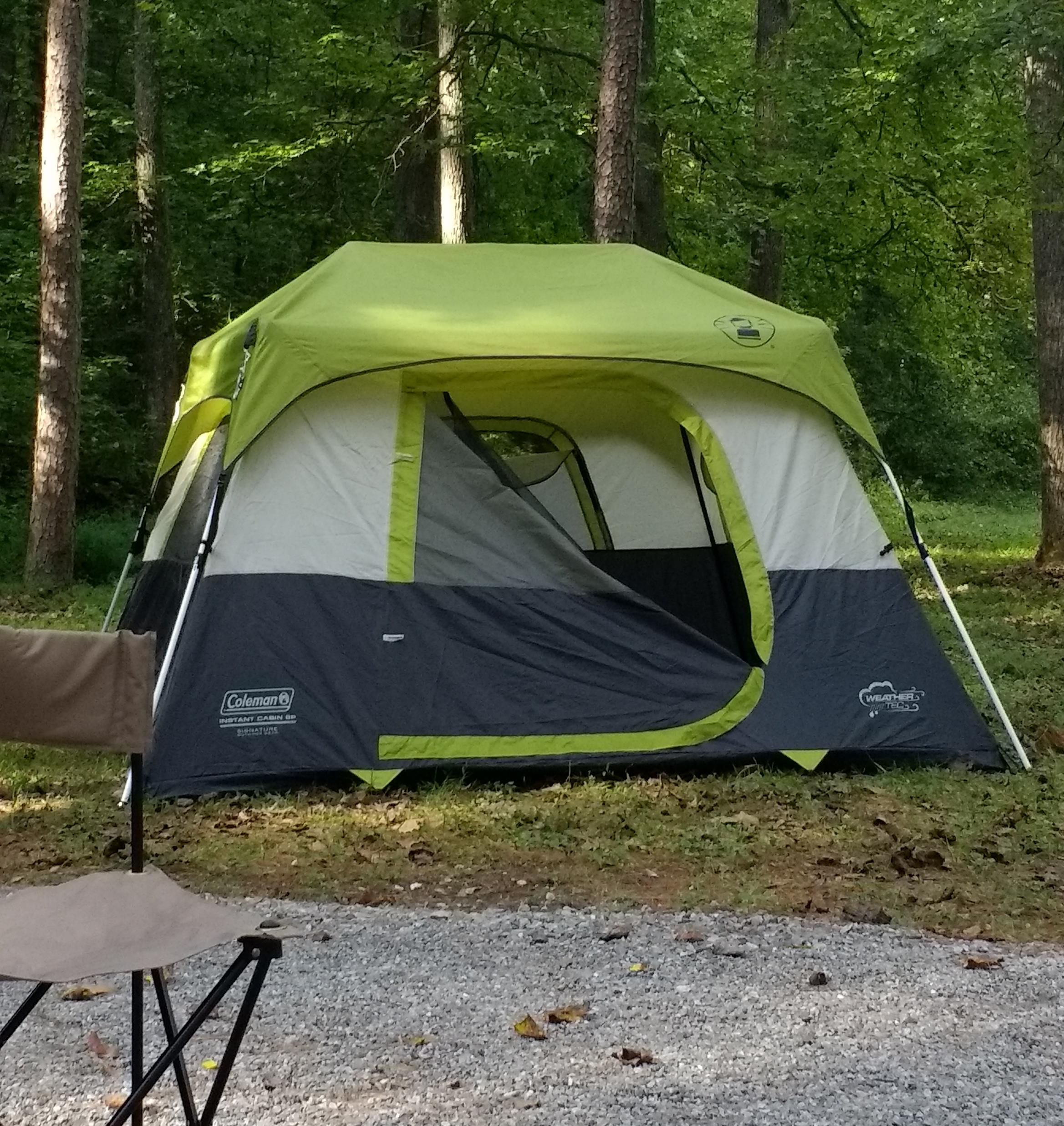
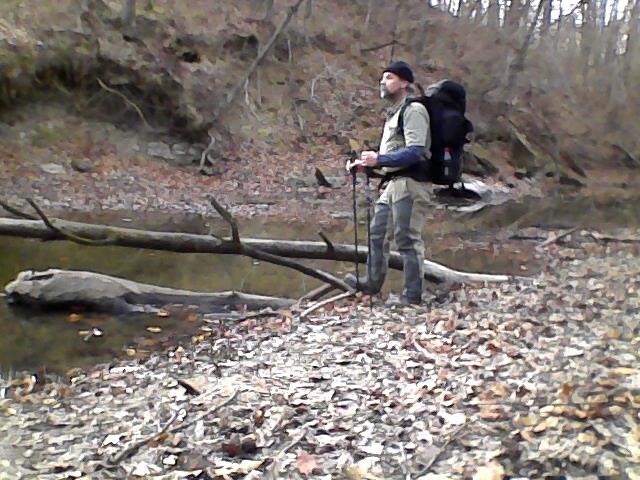
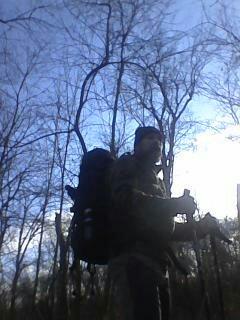
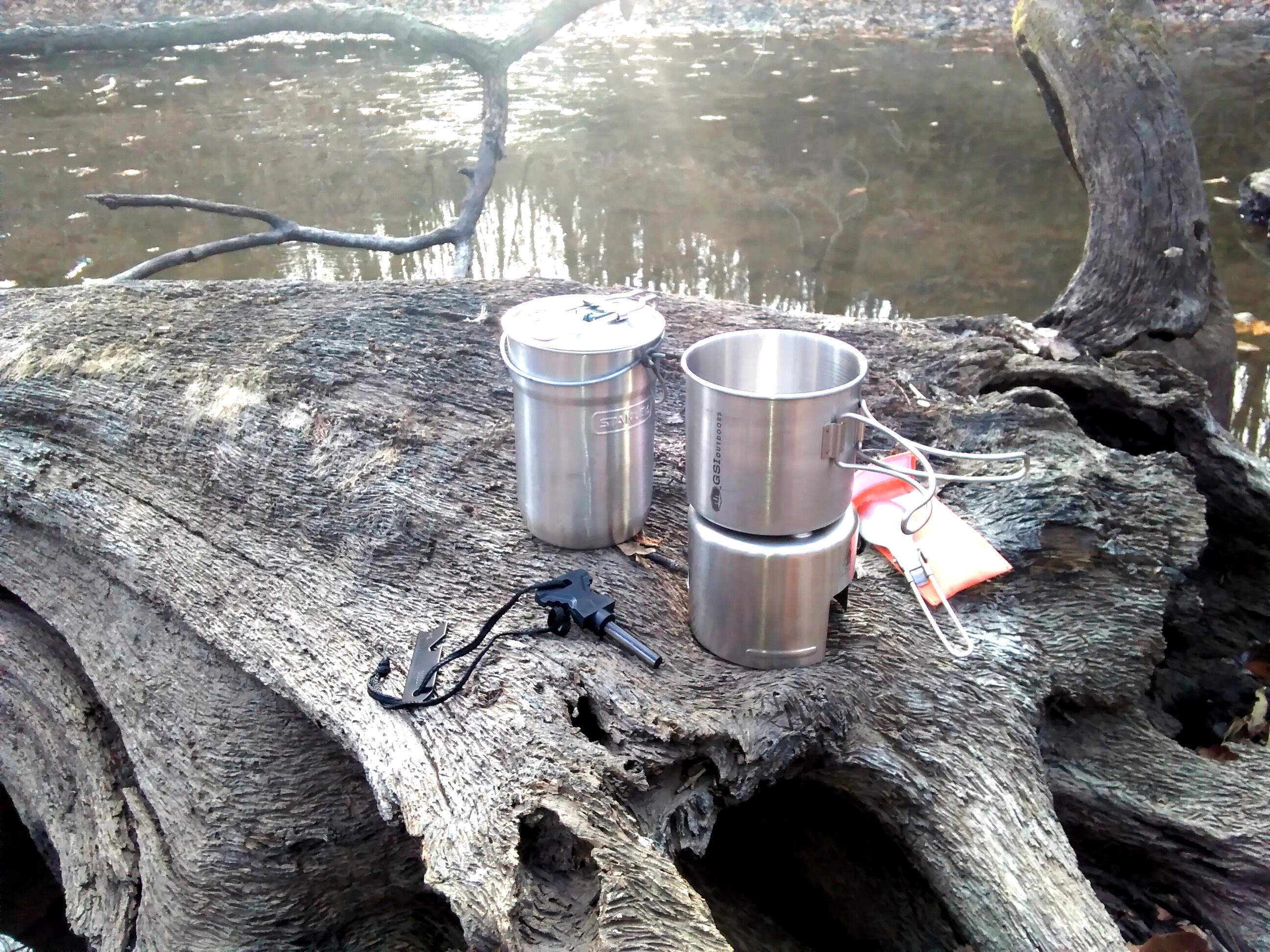
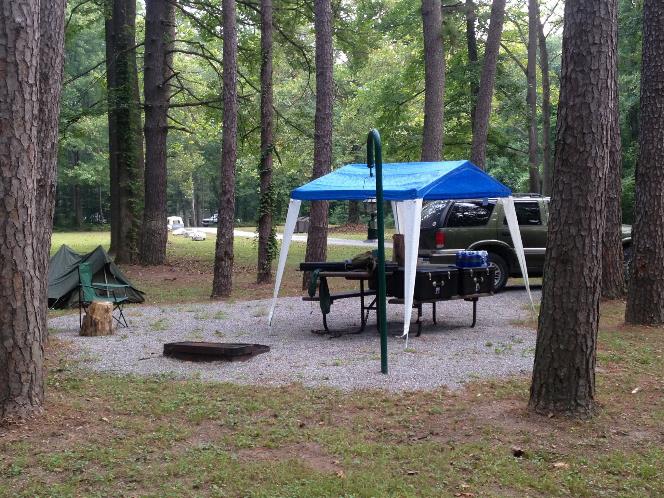
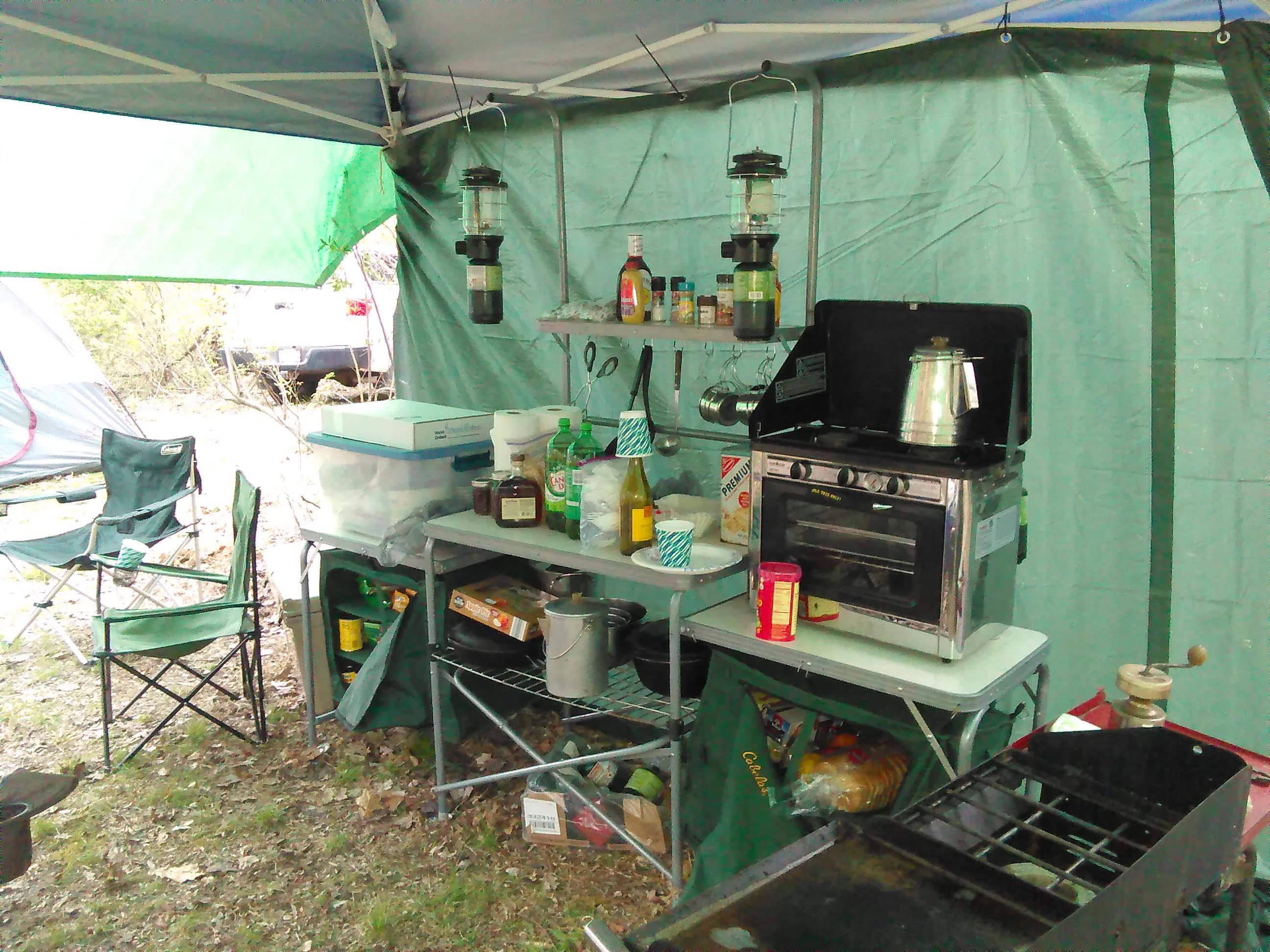
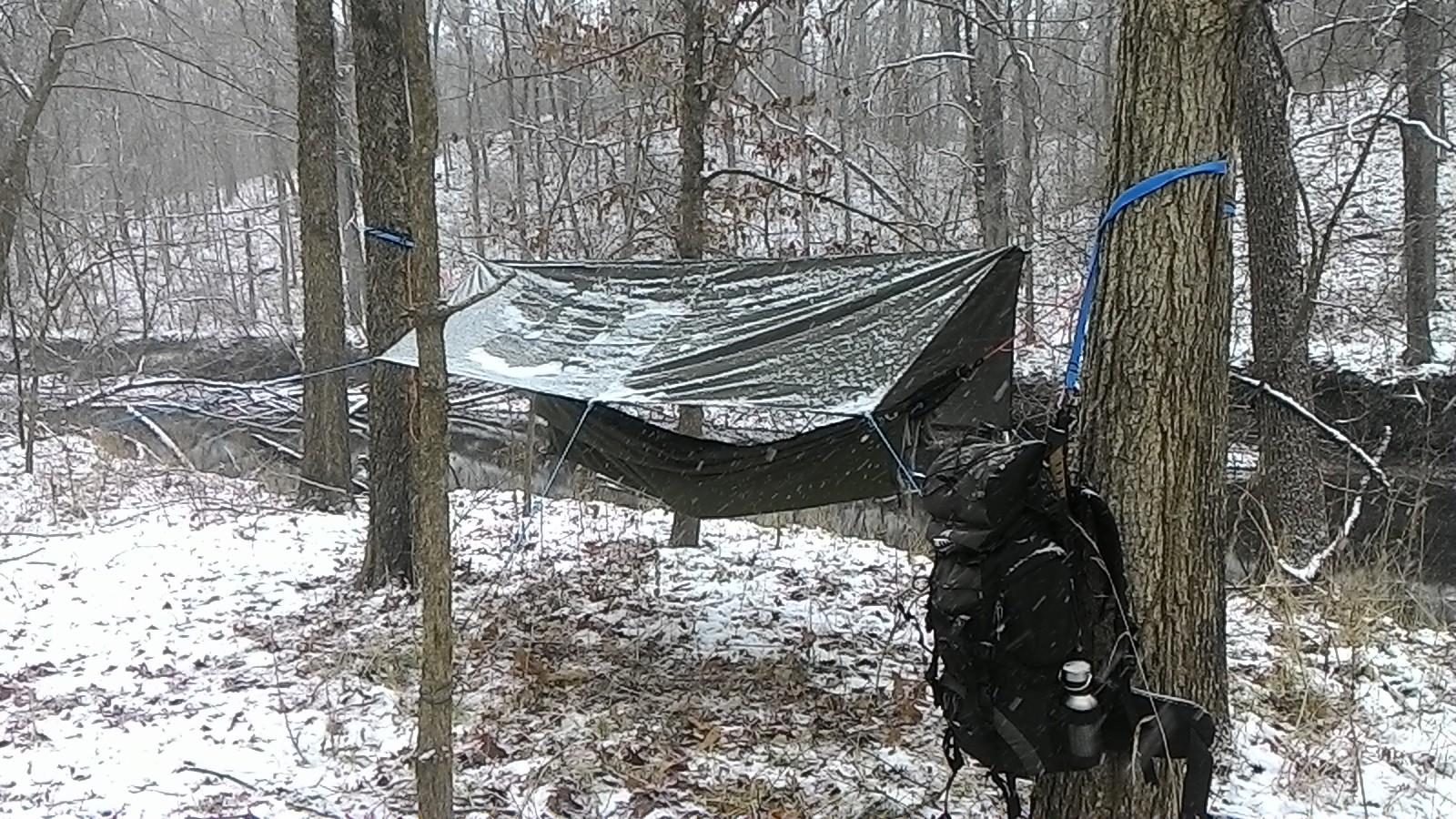
Good Luck & Happy Camping!!!
It was not so awful long ago that while packing and
talking about an upcoming hiking trip that a buddy asked
if he could tag along. I was happy that he was
interested and grateful for the company. He asked how
long we’d be gone and I replied probably 3 days, 4 at
most and sort of laid out some loose plans for the trip. I
asked him if he had everything he needed and that if
he needed anything to check with me and I might have
something he could use. He said that he should be
covered, but if not, the trip was still a couple of weeks
away and he had plenty of time to pick up what he
needed. About a week or so went by when he called
asking if I had an extra cooler he could use. I said sure,
what do ya need it for? He laughed and said for our
camping trip. I said you mean hiking trip, to which he
replied hiking, camping what’s the difference. I said oh,
I would think 3 or 4 hundred pounds depending on what style of camping you’re in to. I told him on the
hiking trip we would cover just over 26 miles over 3 days, and I sure wasn’t up to dragging a cooler that far.
Sort of had it planned to take a casual hike, doing 8-10 miles a day depending on how we got along with
an extra day just in case. There was a bit of a pause and he said, I wouldn’t be able to do that, partially
because he didn’t have the stuff to do it with and mostly because he wasn’t going to walk 26 miles.
Let’s start off with camping, in other parts of the website I have already covered hunting camps or
extended camping with a group while on a week or more long hunting trip, so I won’t cover it again. We’ll
start with a little history, like many guys my age I started camping in the Cub Scouts and Boy Scouts which
was pretty easy in a controlled environment. By the time I was in my early teens, being a farm raised
country boy with access with some nearby woods and creeks, I was heavily drawn to camping… more like
vagabond camping. By vagabond camping I mean, I would eat a big supper at home, grab a couple of
snacks, and army blanket, a flashlight or lantern, a
knife and some matches or lighter depending on
how mountain man-ish I was feeling at the time. I’d
walk to the woods, build a campfire, lay on half the
blanket and coverup with the other half. That was all
it took. As time went on and my urge to camp grew
stronger to take a longer camping trips and not
being old enough to drive myself, I resorted to
backpack camping, keep in mind that in those days
there was no ultralight camping stuff. It was cast
iron skillets, canvas tent, with 100 aluminum pole
sections, six-volt battery flashlights, a Coleman
lantern, canned foods, a heavy sleeping bag, a
canteen, hatchet, skinning knife, a firearm of some
sort for protection, a bow saw, and several pounds
of essential camping gear until I couldn’t fit
anymore in or on my military “ALICE” pack. ALICE “All Purpose Lightweight Individual Carrying
Equipment” Alice was unfaithful to me, mostly on the “Lightweight” part, but I kept her around because she
was all I had. Looking back, I would estimate that I often toted 40 or more pounds around in that pack,
walking as far as I could before resting and taking off again. Finally, when you found a spot that was just
right, or it was starting to get dark, or you couldn’t walk anymore… you made camp. Camp was complete
when you had a circle of bare dirt 45’ or so diameter, had your tent set up, a roaring campfire going,
chopped or drug up a dead tree to use for a bench, and had the pack empty so you could use it as a
pillow. The first night was usually the roughest with canned chili or pork n beans as the only thing you had
the energy to warm up over a fire that night. Life got easier after the first night, you started practicing
woodcraft, set bank lines in the creek, and depending on what was in season tried to bag some wild game
for supper. Life was good. Always in the back of my mind was I knew the more of the canned food I ate
the less weight ALICE had to carry home. I ate a lot of Spam, Pork n beans, Canned Chili, and Beef Stew
on those camping trips. The empty Chili can nested in the pork n beans can, which fit nicely in the Beef
Stew can, that gave me a lot more room in my pack to
drag my handmade or found treasures home. Nothing
fit into Spam cans. After 3 or 4 days of camping and
with the fear of starvation, I would drag my way back
home holding my head a little higher than when I left.
“How far’d ya make it?” Dad would ask. “10, maybe 12
miles I’d guess, down to the shallow end of the lake” I’d
say. “Boy”, He’d say, “that only 3or 4 miles as the crow
flies”. Let me tell you that when you’re 13 years old,
weigh less than a hundred pounds soaking wet, and
you’re carrying a 40+ pound pack, you don’t walk a
straight line…there is a lot of weaving and blind
stumbling involved, so I’m sticking to 10, maybe 12
miles.
That should bring you up-to-date regarding the early days of my camping. With that said let’s talk about
how I camp today. First, we’ll talk about car camping. Car camping, that’s driving to a campground, picking
a campsite, and parking there. When I car camp, it’s about being outdoors and being comfortable. What
all I take depends on if someone else goes with me
or not, and who it is that’s with me. Car camping
can and often involves a tent, hammock, ground
cloth, Coleman Stove, at least 2 Coleman Lanterns,
a stainless steel percolator, camp chairs, cots,
sleeping pads, Sleeping bags, pillows, GPS,
Coolers full of ice, Jugs of water, enough food and
drinks to last the trips entirety, an EZ-UP pavilion,
hiking poles, hot dogsticks, marshmallows,
flashlights, trash bags, batteries, toiletries, dish pan
and dish soap, radios, firewood, fire starters, dishes
and flatware, cooking pots and pans, a small
Weber grill, first aid kits, multiple changes of
clothes, boots and camp shoes, insect repellents,
citronella candles or mosquito coils, storage boxes
so nothing will be left out, books and magazines, guitars, assorted knives, saws, hatchets, and axes, and
anything else we may deem necessary for the 3day adventure. There is not a whole lot of discussion
needed for this style of camping, you take everything you need, right to where you’re going to camp. It
may not be the most adventurous camping available, but it’s all about getting outdoors and enjoying it.
The second type of camping I do is what I refer to as semi-primitive backpack camping. This style of
camping is a compromise of car camping and camping as you hike, taking the minimum while still trying to
be comfortable. This style of camping definitely has a lot of variables involved depending on how far
you’re hiking in and how long you’re staying. If it’s just an overnighter, you may eat a hardy meal before
taking off, so you can pack less food, possibly just a few snacks. This will give you more room for comfort
items. You most likely want a tent or shelter of some sort, a comfortable sleep system consisting of a
sleeping pad and sleeping bag or top quilt, a small led lantern and flashlight, ample water, compass,
insect repellent, something to start a fire, a small folding saw and knife, and as always, a small first aid kit. I
find this type of camping very enjoyable, it’s quick, easy, and really doesn’t take a lot of planning. I have a
few backpacks, so one is normally loaded with everything I need except for the snacks and water. Grab
your pack, a water bottle, and some snacks and you’re ready to go. You hike to your chosen spot, set up
the shelter and enjoy. Time at camp can be spent exploring, reading, or just relaxing listening and watching
nature. For multiday trips you start with the basic
overnight kit and building from there. The first thing
you’ll add of course is enough food for the trip, I find a
few MRE’s are handy for this style of camping and
although not the lightest option requires less thought
while covering your food needs. There are several
modern foods with a long shelf life that will last the
duration of the camping trip and longer. Dehydrated
meats and fruits, trail mix, single serve shelf stable
pouches of tuna, chicken, Spam, flavored rice meals,
breakfast bars, summer sausage, cheese, beef jerky,
beans, and many others if you check your local super
market. Some items can be combined to create very
good skillet meals. Water is heavy, so using a water
filter or some type of water purifying device is preferred
to carrying extra weight of water. Boiling is another
option for purifying water. Along with the extra food,
you’ll need a cook kit, flatware and some sort of alcohol
or other packable stove for cooking, perhaps a few
replacement batteries for items that require batteries, a power bank or solar charger for phones or USB
rechargeable devices, GPS, rain gear, a waste trowel, a folding pack stool, and any other comfort items
that you feel are necessary to enjoy the trip. Remember that your pack only holds so much, so
compromising is a necessity, you may have to downsize from two-man tent to a one-man tent or use a
more compact sleeping pad. I find that repackaging food sometimes allows you to carry the same amount
or more food in a smaller package. If backpacking with another person items can be divided between
packs, one carrying all the food and smaller items while the other holds the sleeping pads, sleeping bags
and larger items such as a multi-person tent.
My extended compact lightweight camping kit consists of a 55-liter backpack that comfortably holds
everything a need for approximately a week-long camping trip. The main component is my hammock
setup, consisting of the hammock with attached
bug net, underquilt, topquilt, camp pillow, and tarp
and although it may appear a bit bulky, it replaces
the tent, sleeping pad, sleeping bag, and pillow,
actually saving a lot of space in the backpack. My
cook kit consists of a 24 oz., stainless steel
cooking pot with a 20 oz. stainless steel cup,
Trangia burner, stainless steel stove, lighter,
folding titanium spork, extra fuel, cloth to wipe it
down, a bandana for a napkin, small folding knife,
and a few other small items all nested together in a
6” long 4” diameter package. A pouch on the
outside of the pack holds my Mora knife, and
folding saw, a larger first aid kit stores in the hood
pocket along with my rain gear, external pockets
hold items such as my power bank, trowel,
toiletries, water filter, and items that I may need quick access to. The topquilt and underquilt stores in the
sleeping bag compartment at the bottom of the backpack, leaving a lot of room in the main compartment
for food and clothes. Fully loaded with everything I will need except for food; the pack has a base weight
of around 18 lbs. Although I do normally use hiking poles, my specific pack has a pocket and straps to
hold them securely in place if carrying a camera something else in your hands. Other things I would
suggest is a waterproof backpack cover, a strap long enough to wrap around a tree and hang your pack
from to keep it off the ground, a small ground cloth to put under the hammock to have a place to change
clothes or to take you boots or shoes on and off when getting in or out of the hammock. The small ground
cloth can also be used under the hammock in the event you are unable to find suitable trees to hang your
hammock from. Using your hiking poles as supports for your tarp, although not the most comfortable, you
can use the hammock and tarp as an improvised tent or bivy shelter.
Most of the food I carry is dehydrated or vacuum
packed, a point of interest is that money invested in a
dehydrator and vacuum sealer is money well spent in
the long run, often saving hundreds of dollars over a
few seasons of camping. With these items your meals
can be a lot more varied and take up a lot less space. I
have experimented with several food types and almost
everything I have tried as worked. One of my favorite
meals for cooler weather is dehydrated homemade
chili, vacuum sealed. 2 servings will vacuum down to
about the size of an oatmeal packet and can be
reconstituted by pouring a cup or so of boiling water
over it and letting it sit for a few minutes stirring
occasionally. Another example, a 15 oz. can of mixed
vegetables will dehydrate and vacuum seal down to about the size of a regular cereal bar. Dehydrating
also reduces the need for more bulky hard containers and carrying out the trash is much easier. By
dehydrating and vacuum sealing your own food you should be able to carry along meals that would
normally be too bulky, too heavy, or have too short of shelf life to carry along. I hope this helps with your
camping trips, more importantly take time to think out your trip and what you need or want, double check
that you have everything you need. Most importantly, let someone know where you're going and when to
expect you back.